Pharmaceutical and biotech manufacturers have a complex go-to-market strategy that includes a broad range of payer, channel, government contracts, and multiple service providers to ensure therapies are delivered to patients. Gross-to-Net (GTN or G2N) calculations, models, and analysis are often core to these go-to-market strategies. While patient service programs are just one of many inputs to these models; there is an opportunity to maximize GTN while optimizing your patient service strategy with a focus on three key areas.
Free Product
In patient service programs, free product is made available to patients in several forms. The first is patient assistance programs that supply free product to patients who are uninsured or who do not have insurance coverage for a particular product. The second is starter programs that are designed to provide patients access to therapy while healthcare providers work through the prior authorization process for commercial insurance. Ultimately, these patients transition to commercial coverage or back to patient assistance programs if they have no insurance coverage for the product. The last category of free product is bridge programs, which supply temporary product assistance when the patient loses health insurance or has a gap in their insurance coverage. These patients typically transition to new coverage or back to patient assistance programs if they are in need of long-term assistance.
Program design and program business rules play a key role in influencing GTN when it comes to free product. Key considerations include eligibility criteria, length of assistance, amount of product shipped, and processes for ongoing shipments which all can affect how much free product is dispensed through your free goods programs. Careful analysis of program operations and product dispensing patterns may offer insight into potential optimization opportunities.
Financial Assistance
Financial assistance includes the affordability (or copay) programs that are designed to assist patients with their out-of-pocket expense for therapies. Financial assistance is adjudicated at the point of sale for products covered under the pharmacy benefit; or, in the form of secondary reimbursement to the patient or healthcare provider for products covered under the medical benefit. Too often, these programs are modeled after what is in place for competitive products in the market, or the offer design is set and never revisited. However, insights derived from copay program redemption data can be identified and, if actioned on regularly, can positively impact current and long-term program performance.
The GTN lever for affordability programs is grounded in maintaining control of the benefit spend. A regular assessment of your affordability program with a focus on offer design, patient affordability, patient engagement, offer management, and field awareness will ensure patient access to therapy is balanced with benefit spend and ultimately GTN calculations. This can be done by regular, transparent deep dive analysis in partnership with the client.
Program Administration
When considering GTN related to program administration there is the direct consideration of service provider cost as well as the indirect consideration of how your patient service program is influencing market access.
From a cost perspective, clearly, the direct service fees are a lever for GTN. However, patient service leaders are also looking to operational rigor in execution and technology to optimize their program operation. Monitoring key performance metrics to ensure less hold time and faster turnaround times to help get patients on their therapy improves patient outcomes. Innovation in technology is eliminating redundant manual tasks, decreasing administrative errors for operators, integrating with healthcare provider workflows, and improving engagement with patients. These optimizations can improve operations and can also manage program costs.
From a market access perspective, a comprehensive patient service strategy that includes access, affordability, and adherence can improve patient access to therapy. Supporting patients during treatment initiation is important to drive toward positive patient outcomes. Patient service programs help patients navigate complex healthcare situations, ranging from understanding insurance coverage to assisting with healthcare expenses and in-home support. An optimized program will include case management services to collaborate with physicians, insurance providers, pharmacies, patients, and their caregivers to oversee the patient journey, remove barriers and facilitate access to therapy.
The most successful patient service programs wrap targeted services around each step of the product and patient journey. It is important to regularly assess and optimize patient service programs to support access to therapy, improve market access, and influence GTN calculations.
UBC is committed to providing real-time insights, from patient sentiment to prescriber-level copay redemption data to lifecycle RWE. Within our affordability offering, our team of experts proactively manages the affordability program and analyzes copay redemption data to find the trends that are important to your brand. By being proactive rather than reactive, we help your patients achieve access without damaging your gross-to-net. Throughout the program lifecycle, we are monitoring patient utilization, patient satisfaction with individual services, and the outcomes those services are producing. Get in touch to learn how we can optimize your patient service and affordability programs here.
About the Author

Dana Edwards serves as the Vice President, Patient Access & Strategic Engagement at UBC. She brings to this role more than 20 years of experience in executing patient service and market access strategies. Ms. Edwards is a strategic advisor to pharmaceutical and biotech leaders on the design and implementation of best-in-class, competitive, and adaptable access solutions to help patients begin therapy quickly, remain on therapy as appropriate, and ultimately deliver optimal care for patients.







